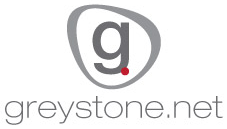How Can Healthcare Organizations Select the Right Technology Vendor?
Ask the Expert, with Mike Schneider, Co-Founder, and Farrah Hunt Thompson, Director of Consulting, at Greystone.Net
// By Jane Weber Brubaker //
 When it comes to selecting software, implementation, or design vendors for major technology upgrades such as a content management system (CMS) or customer relationship management system (CRM), there’s a lot on the line. Even small healthcare organizations may have to pony up hundreds of thousands of dollars; for larger organizations, it could be in the millions. Where do you begin? How do you narrow the field? How do you minimize the risk of making the wrong choice?
When it comes to selecting software, implementation, or design vendors for major technology upgrades such as a content management system (CMS) or customer relationship management system (CRM), there’s a lot on the line. Even small healthcare organizations may have to pony up hundreds of thousands of dollars; for larger organizations, it could be in the millions. Where do you begin? How do you narrow the field? How do you minimize the risk of making the wrong choice?

Mike Schneider, Executive Vice President and Co-Founder, Greystone.net
Whether your organization has complex requirements and deep enough pockets to choose from among the top-rated solutions in Gartner’s Magic Quadrant, or you’re looking for a simple, affordable, turnkey solution, choosing the right solution is critical to your organization’s success. The vendor selection methodology of Greystone.Net has helped many organizations choose CMS, CRM, design, implementation, and call center vendors, garnering high praise from clients we’ve contacted. We spoke with Greystone Co-Founder and Executive Vice President Mike Schneider, and with Farrah Hunt Thompson, Director of Consulting, to learn more about their process. Login to continue reading. Greystone’s role as a vendor selection consultant was an outgrowth of its strategic consulting practice, helping clients develop their digital plans. “We had clients that at the end of our strategy engagement said, ‘Okay, now I understand exactly what I want to do. What software is out there to do this?’” says Schneider.

Farrah Hunt Thompson, Director of Consulting, at Greystone.Net
A vendor selection engagement takes about eight to 10 weeks from start to finish. It begins with an initial conversation with the client’s project lead to get an understanding of what the organization is looking for, and where it is in the process. “Sometimes the client comes in knowing exactly the platform that they want to look at,” says Hunt Thompson. “Sometimes they even know the vendor, but typically, we’ll start by giving them an overview of the space.” A formal kickoff follows.
The Kickoff
The purpose of the kickoff is to drill down into the project parameters, identify potential vendors, and discuss the pros and cons of each in the context of the organization’s business objectives. Key questions are:
Budget—“You’ve got this huge range of costs. You could be a midsize hospital in Illinois, and you don’t have $2 million to go out and buy Adobe,” says Schneider. “That’s where we come in. We try to help our clients right-size the solution.”
Services Required—Clients may be looking for multiple vendors to support website development projects. “On a large-scale project you could literally have an army of vendors,” says Schneider, listing design, content, programming, and SEO as examples.
Technology—Does the client have specific requirements? “We’ve literally got folks who come to us and say, ‘If it’s not a .net solution, we don’t even want to talk about it because we’re a .net shop and all we do is Microsoft,’” says Schneider.
Internal Resources—Some clients have internal resources they want to leverage. “They want to make sure that whatever they buy they can work with it, fool with it, and manage it themselves,” says Schneider. Open source solutions like Drupal and WordPress are popular with organizations that have development resources and want to have access to the code to extend and customize it.
Other clients prefer a turnkey solution managed by the vendor. “We have clients who absolutely do not want to have anything to do with servicing the content management system from a technological perspective,” Schneider says.
Implementation Capabilities—For some CMS solutions, clients select both software and an implementation partner with specific expertise in the chosen solution, as well as experience in healthcare.
Third-Party Integrations—A key question when choosing a new technology solution is how well it will integrate with existing or planned applications such as electronic medical records, or email. Do integrations need to be built from scratch, or do they already exist?
Project Management Style—Agile or waterfall? “We’ll ask, ‘Do you have a particular project management style that you prefer working in?'” says Schneider. “And that way we know if there’s an agency that just does not budge on the way they approach their projects, then they may not be a good fit for the client.”
Narrowing the Field
Greystone’s list of possible CMS and related vendors has grown to more than 40. Schneider notes, “I also ask our clients if there is anyone they want to consider. Sometimes they have a local agency they’re already working with. We’ve gained actually quite a few vendors just that way.”
Hunt Thompson adds, “We don’t present all of those vendors to a client at once because they might not be a good fit for the client. We’ll present a smaller group of vendors, which probably doesn’t exceed 20. And then we work with them to whittle that down to five to eight vendors who receive the request for proposal (RFP).”
The RFP Process
Greystone uses a comprehensive requirements document as the basis of the RFP. “It has line items in it that are going to be across every organization as key things that would go into an RFP,” says Hunt Thompson. The organization works with the Greystone consulting team to customize the requirements, sometimes adding new ones that are specific to the client.
Once the requirements have been fleshed out, Greystone converts it to a formal RFP document and works with the client to finalize it and send it out to the chosen vendors. The vendors have about a week to respond with questions. Greystone facilitates all communications between clients and vendors throughout the process. “That way the client isn’t having to answer multiple questions coming from vendors,” says Hunt Thompson. “And the vendors are receiving the same information across the board so it remains an equal playing field for everybody.”
Once vendors have received answers to their questions, the vendors have a week to submit their proposals. Each proposal is scored, and typically two finalists are selected. Each comes in for a daylong demo. “At the end of each day we regroup with the voting committee and discuss what they like, and identify any follow-up issues. When the follow-up is complete, the winner is selected and contract negotiations begin,” says Hunt Thompson.
The typical contract term is three years. “Much as [clients] would love to think that they are going to use it forever, they don’t go into the engagement thinking they are going to have it forever,” says Hunt Thompson. “Technology changes so quickly now that even some of our clients who are okay with their current CMS come to us and want to see the options that are out there.”
Greystone has honed its vendor selection process through more than 100 client engagements. “One of the reasons people come to us is that our process is very rigid and routinized,” says Schneider. “I think it kind of beats the way they’ve done it in the past, which is, ‘Okay, Joe, you get the proposals, and Bill, you work on the RFP,’ and then hopefully everyone does what they’re supposed to do and it all comes together at some point.”
Even with this level of rigor, things can go wrong, such as when a vendor underbids a project, or a hospital wasn’t completely open with the issues it was dealing with. “Our process is like the first inning of a nine-inning game,” says Schneider. “But they still have to play the other eight innings.”
Jane Weber Brubaker is Editor of eHealthcare Strategy & Trends.

